|
leslie
- 论坛博士后
- 19720110
- 27155
- 28495
- 2003-01-24
|
 leslie论坛博士后
leslie论坛博士后
1#
t
T
 发表于 2011-04-12 13:42
|只看楼主
发表于 2011-04-12 13:42
|只看楼主
20th TAA Hi-End Show
分类: 2010/08/07 10:01
消耗一天特休去看音响展,重点是拿 Catalog 和 CD 啦!
忘了多久之前,在圆山饭店举行音响展时,印象最深刻的是 B&W N800 ,事后只见音响网站一堆烧友说没调好、没 RUN 开! 今年 800D 也展出了,试听者众,我只得在第三排正中央座位听,为了避前两排烧友的头,我站着听了好一阵子,站累了,坐下来,有趣的事发生了 ___ 声音变了! 我立刻反覆站立、坐下,声音都不相同,今、明、后天你会去看音响展吗? 请 double check 此现象!
稍微描述一下(我很不习惯用形容词去描述声音):
站着听的时候,耳朵大概比高音单体高 40 公分 左右(我身高 174 公分 ),可以理解我耳朵不是在高音单体正前方,但是因为距离有点远,以角度来看没偏太多,我可以听到量较多的中低频。
一坐下来,前两排烧友的头理论上干扰中高频到我耳朵的路径,大家都知到低频是比较没有方向性的,当我坐下来听时,反倒是中低频衰减很多,反倒中高频变清晰了,走出这个展房,巧遇【蕃薯宝宝】,很兴奋的告诉他这现象,我又进去再反覆比较垂直的『扩散』角度,状况依旧。
后来在 ATC 的展房遇到【二哥】, ATC 的落地喇叭垂直扩散角度就比较好,蹲下去慢慢站起来,声音没多大的变化,后来去听 TAD ,没坐第一排中央,蹲下去慢慢站起来基本上声音也是一致的。
你会想 __ 疯子,搞啥怪试听方法! ! ! 以前我也没有注意 垂直的扩散角度 ,这次是很偶然的状况下发现新大陆,可能是家里 KEF Reference 207 及 201 同轴喇叭听习惯了,如果喇叭扩散角度不大,是好是坏呢? 坏的是要正襟危坐才听得到理想的声音,好的是 __ 等于有好几对喇叭,不管是好是坏,这样的喇叭是【独享杯】,呵呵,还会期望在音响展挑喇叭,听到该喇叭正确的声音,放的音乐不见得是自己熟悉的曲子!
忘了在几楼,有一对 B&W 801 ,哪一代的我没注意,我只注意 801 无上述现象。 我说过好多次,我不喜欢 Dynaudio 的声音,但是,今年钛孚展出的那对,打破我的成见! 有品牌迷思吗? 还是 product by product 谈比较好! 另一对让我感受深刻的叭是德锠 展出 的 JBL 落地叭(没记型号,就算记了我也不会买,家里没地方放),刚去时放贝多芬小提琴协奏曲第三乐章,坦白说我不喜欢那声音 __ 粗,只是走累了,在那边坐着休息,之后放 JAZZ ,呵呵,好听耶!
另一个令我印象深刻,也待较 长 时间的是 J 牌 Class-D 推 A 喇叭,我对 A 喇叭的声底并不熟悉,一直感觉有点朦朦胧胧,略带一点混,是 Class-D 干的好事,还是 A 喇叭? 我并不厌恶这声音,如同二哥的『牛肉面哲学』,玩音响要一夫一妻,还是大享齐人之福呢?
插入【二哥】的回覆:
顽家大哥真是耳力惊人 , 居然能在展场听出这些不同 . 话说 B&W 和我也算是有缘 , 我至少也卖过他 10 年 . 说真格的 , 现在的 B&W 真是不如当年 , 定价高的离谱 , 产品种类多了却逐渐的走味 , 让人感到惋惜 .
说它不如当年我可不是乱说的 , 请看 stereophile 网站的评论 , 它们在写手吹得天花乱坠之际保留了测试数据 , 我觉得这是高招 , 看得懂数据的人就知道东西问题在哪 , 看评论的人就各取所需的买 , 不得罪任一方 .
请上 www.stereophile.com, 搜寻 B&W 801, 800,nautilus 801,signature 800 的评论, 并请参考各评论中的 "measurement" 选项里的 "vertical response" 图表就知差异 .
Matrix 800
Matrix 801 S2
1990 年代的 Matrix 801 与 800 非常良好 , 垂直响应变异不大 , 800 更是优秀 , 当年听过就念念不忘 , 只是长的实在太令人抱歉 .
Nautilus 801
Signature 800
再看看 21 世纪的接班人 , Natilus 801 与 Signature 800, 垂直轴响应变化剧烈 ,
N801 还好 , 站着听差异不大 , 坐地上听就怪了 , Signature 800 就烂了 , 站着坐低都不对 , 就买一把可调高度的椅子吧 .
Vivid G1Giya
再看看 Nautilus 原设计者 -Laurence Dickie 跳到 Vivid Audio 的作品吧 , 这老兄实力惊人 , Nautitus 外型经过十多年仍然经典 , 声音也是难有敌手 , 再看看 G 1G iya 的垂直轴响应 , 我只有一个想法 : B&W 留不住这人才真是可惜啊 .
以上只有从技术观点分析差异 , 不包括对音质的主观爱好 , 其实这次音响展我觉得很多号角喇叭很好听ㄝ ..
Floor Loudspeaker Reviews
Vivid Audio G1Giya loudspeaker
By Wes Phillips• Posted: Jul 12, 2010
Over the years that I've been reviewing hi-fi, I've had my share of loudspeakers that drew comments from everyone who visited during the audition period. Some of those comments were about the speakers' appearance—most often about their size—and some were about how good they sounded. Vivid's G1Giya loudspeaker ($65,000/pair), its narrow-baffled, swirling cochlear shape molded from fiber-reinforced composite, elicited more comments of both types than has any other speaker I've reviewed.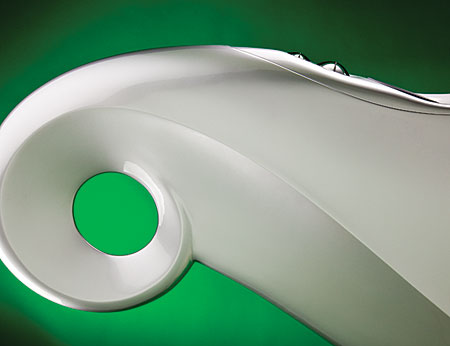
This started even before I got them into my living room, as Philip O'Hanlon, of Vivid importer On a Higher Note, and Stealth Audio's Serguei Timachev, and I unpacked the Giyas from their crates on the street (while the Giyas made it safely down my front hall, the crates couldn't). My next-door neighbor and his next-door neighbor sauntered over to see what we were doing. "Wow. Are those art or are they speakers?"
As it turned out, the G1Giya is both.
 Learn from the past, set vivid goals for the future Learn from the past, set vivid goals for the future
Vivid Audio is not a familiar name to many audiophiles, but the company has its roots in one of the most iconic audio designs of all times, the B&W Nautilus. Among Vivid's owners are Robert Trunz, erstwhile co-owner of Bowers & Wilkins, and Laurence Dickie, who used to design B&W's drivers at their R&D facility in Steyning, England.
When Trunz left B&W, in 1996, he emigrated to South Africa, where he met Philip Guttentag and Bruce and Dee Gessner, who had been in the retail hi-fi business but were now interested in building high-end loudspeakers in South Africa. Trunz suggested that they bring in Dickie to design drivers rather than rely on OEM designs. Vivid Audio launched their first products, the B1 and K1 floorstanders, in 2004. By 2006, the partners felt the range needed a flagship product, a design process that would take over 18 months before a prototype could be shown at the2008 CES.
Enter the G1Giya (the line now includes the smaller G2. Dickie had created the "Tapered tube loading" concept for the Nautilus line, and he believed in it (read thewhite paper about it). The technology consists of coupling a driver to an exponentially tapered tube filled with damping fiber. The act of dragging the fiber into the tube causes it to compress at the narrow end, significantly reducing internal reflections. Dickie envisioned the Giya as a more structurally integrated version of tapered tubes attached to drivers than any previous design. This also led to the G1Giya's Smurf-like profile, as its woofers' tubes curve into a "jug handle" at the speaker's apex.
The organic shape and materials of the G1Giya's vacuum-infused, fiber-composite cabinet are not so much matters of style (although they evince style a-plenty) as of function. The woofer tube is curved to prevent the speaker from occupying too large a footprint. The teardrop shape of the Giya's baffle reduces cabinet reflections, and the enclosure's downward taper when seen from the side allows the tapered tubes of the midbass, midrange, and tweeter drive-units each to be solidly coupled to the rear of the nacelle with a single locking screw. The Giya's constantly changing profile and depth make it hard to state dimensions, but to make a complex shape simple, call it 66.3" H by 17.2" W by 31.2" D.
The G1Giya is a four-way design with five drivers. Its two 11" (279mm) anodized aluminum woofers are mounted on opposite sides of the cabinet and mechanically coupled. Directly behind each woofer is a vent tuned to 23Hz; the drivers themselves are loaded by the aforementioned curving, tapered tubes, tuned to 100Hz.

Set into a shallow depression on the baffle are the 1" (26mm) aluminum catenary dome tweeter, 2" (50mm) aluminum catenary dome midrange, and 4.9" (125mm) aluminum-cone lower-midrange unit. All drivers have cylindrical magnets to leave a large-diameter vent behind the diaphragm in order to couple to the tapered tube, are decoupled from the baffle by ring mounts, are Vivid's own proprietary designs, and are explained in great detail at Vivid'swebsite
 Floor Loudspeaker Reviews Floor Loudspeaker Reviews
Vivid Audio G1Giya loudspeaker Page 2
The crossover frequencies are 220, 880, and 3500Hz. "As far as the filter order is concerned," says Dickie, "we use Linkwitz-Riley fourth-order acoustic responses; that is to say that the overall responses of each driver and crossover combination are fourth-order. Now, since most drivers have a natural second-order rolloff at their lower end and often a first or second at the top end, this means the electrical network order might only need to be second- or third-order." Set vivid, detailed goals Set vivid, detailed goals
Other than accessing their bottom-mounted, biwirable speaker terminals—a two-person job—the G1Giyas weren't difficult to set up. Their narrow profile favors a slight toe-in, and they like room to breathe; in my room, they ended up 46" from the sidewalls and 71" from the front wall.
The Vivid has a claimed sensitivity of 91dB; I was able to easily drive them with all of the amplifiers I had in-house: Aesthetix Atlas (200Wpc) and Balanced Audio Technology VK-55SE (55Wpc) stereo amps, and Luxman B1000f (250W) and Parasound Halo JC 1(400W) monoblocks. You'd expect the big monoblocks to have enough grunt to drive almost anything, but even the relatively low-powered BAT drove the Giyas to remarkable levels with no loss of clarity or air. I wouldn't attempt to drive the Vivids with a single-ended-triode design or a low-current solid-state amplifier—but neither, I suspect, would anyone else.
A caution, however: Although the G1Giya's grille is avery open wire mesh, it did muffle the sound to a degree that, while not exactly egregious, affected the speaker's openness and detail more than I could tolerate. On the other hand, the 50mm dome is fragile, and a magnet for curious fingers and god knows what else. Somehow, both midrange drivers wound up dented during their stay at my house—I know I didn't do it, and I don't think any of the adults in the household did either, but I recommend religiously replacing the grilles after every listening session. Fortunately, this is easy to do: they're held in place by magnets within the baffle.
Vivid images are like a beautiful melody
Cold out of their crates, the G1Giyas sounded great: dynamic, open, rich, and, yes, vivid. It turned out that that was how they sounded when literally cold—the temperature outside was in the teens. Within an hour they were sounding more dynamic, open, rich, and vivid. O'Hanlon, Timachev, and I chatted and listened, whiling away the afternoon until John Atkinson arrived and played some of his most recent high-resolution recording projects. Wowsers! My realism meter was pegged at 11!

I was consistently impressed by the G1Giya's dynamic range and jump factor. Then Philip O'Hanlon asked if he could audition some of his own hi-rez digital files. He likes to listen loud. He cranked the Luxman monoblocks into hyperdrive (or at least to somewhere above 100dB). To my surprise, even at extremely high volume levels, the Giyas retained all their clarity and focus—and produced deep bass that immediately set off car alarms in front of my house.
This was indeed impressive performance. I don't typically listen at such a high volume, but I'd never heard a loudspeaker return such a feeling of limitless naturalism. Even at levels that hadto be overloading my listening room, there was no sense of imminent—or any—dynamic compression. Not that there can't be dynamic compression from live acoustic music—I've heard the Chicago Symphony Orchestra overload Carnegie Hall—but that sense of limitless ease is one of the ways that live music retains its edge over reproduced sound. It's a quality I've never heard another loudspeaker do better than the G1Giya.
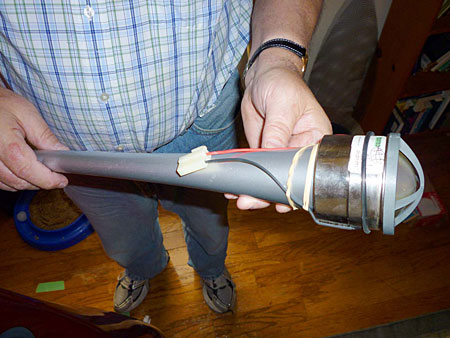
"The Wardrobe Master of Paradise," from The Conjure Project's Conjure (American Clavé, 24-bit/88kHz FLAC download from HDtracks.com), had a soundstage extraordinarily wide and deep. Taj Mahal's gravelly growl had depth and a remarkably lifelike huskiness. David Murray's tenor had bite and startling presence. However, it was the Haitian drummers who stole the show—their drums leapt from the mix with the speed and bite and, especially, the sensation of inhabiting an acoustic space. It was uncannily lifelike. I attended the recording sessions for this album, so I know it was recorded in the old Electric Lady studios—not a large, reverberant venue, though you'd never know it from the sound of this album.
"Ducks on the Wall," from the Kinks' A Soap Opera (Koch International, 24/96 FLAC download, HDtracks), begins with an extremely rude duck call that the G1Giyas delivered with close-to-squarewave nastiness, before breaking into a raucous boogie featuring Dave Davies' cutting guitar and some tasty bass playing from John Dalton. Ray Davies' shouted vocals are very up-front, but overall, A Soap Opera offers solid studio rock sound—that guitar is crisp, and the bass is tight and moderately extended.
Vivid Audio G1Giya loudspeaker Page 3
"Suite de Caravan," from Jon Hassell's Fascinoma (Water Lily Acoustics, 24/88 FLAC download, HDtracks), sounded amazing through the G1s. I've listened to this track on CD for years, and expected this hi-rez download to sound atmospheric and timbrally alive. What I didn'tanticipate was how huge the acoustic space it took place in must have been. A duet between trumpeter Hassell and pianist Jacky Terrasson, it created, through the Vivids, a soundstage that stretched from wall to wall, floor to ceiling, and behind the speakers to some point beyondmy front wall. It was, perhaps, the most convincing job of transporting this listener into an original acoustic that I have ever experienced.Part of this, again, was the effortless way the G1Giyas had with dynamics—against Hassell's restrained (and muted) trumpet, Terrasson's piano constantly leaps between foreground and background. His syncopated accompaniment kept startling me with its facile jumps and emphases. I shouldn't have been surprised—after all, one experiences this all the time with live music, even acoustic duets, but recorded sound frequently smooths out those dynamic peaks and valleys. Not so through the G1Giyas.
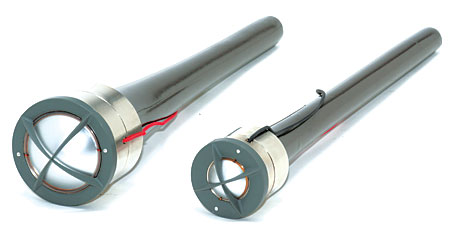
Another immense soundscape was presented by "Tea Leaf Prophecy," from Herbie Hancock'sRiver: The Joni Letters (Verve, 24/96 FLAC download, HDtracks). Drummer Vinnie Colaiuta's brushwork sounded anchored in the recording space, Dave Holland's acoustic bass was extended and concrete, while Hancock's piano filled all the spaces between the other instruments, creating a three-dimensional construct that was sonically compelling. And then there was Mitchell's husky voice, now almost a tenor thanks to age and cigarettes (I don't mean that as a putdown; she's more in control of her instrument than ever, I think). But what made me jump, every time, was how present and—I keep returning to this word—lifelikeWayne Shorter's soprano saxophone sounded.
Ezra Pound said that "literature is news that stays news." The Vivid G1Giya reinforced that his statement is just as true of great music.
Memories so real and vivid
During the G1Giyas' stay in my system, the only other Class A speakers also visiting were Thiel's CS3.7s. One might justifiably claim that comparing the $12,900/pair Thiels to the $65,000/pair Vivids is inherently unfair, but the CS3.7s are listed in Class A (Limited Extreme LF) of Stereophile's "Recommended Components," and I did say in my review of them in the December 2008 issue that I loved them. So, of course, I was cruel to them.
Playing "The Wardrobe Master of Paradise," the Thiels delivered a smaller soundstage than the Vivids, albeit one still perfectly formed. The G1Giya's bass was more extended, and the Haitian drummers had greater jump factor.
The Thiels toned down the gawpy stomp of the Kinks' "Ducks on the Wall," but only by a bit. I speculate that this might have more to do with the original recording quality of A Soap Operathan anything else—a speaker can't reproduce what never made it onto the tape. The G1Giyas did go a tad deeper, and Dave Davies' guitar may have had a bit more of the buzz saw to it, but the difference wasn't immense.
Not so with Hassell's "Suite de Caravan," however. Again the Thiels reduced the size of the soundstage, especially the vertical dimension. Dynamic contrasts, while quite good, were not as lifelike through the Thiels as through the Giyas—and this is precisely one of the qualities I most admired about the CS3.7, and still do. Terrasson's piano sounded more in the same plane as Hassell's trumpet than it did through the Vivids.
And that was pretty much the story with "Tea Leaf Prophecy," as well. Compared to the G1Giyas, the Thiels reduced both the scale of the soundstage and the instruments' timbral richness.
At some point in such comparisons, I always ask myself if the differences are night-and-day—or is one speaker right and the other wrong? I respond unequivocally: Yes and no. Were the Vivids, in my opinion, better than the Thiels? Yes. Were the Thiels wrong? No. I thought they were great speakers and a value in 2008, and I still think so.
But I also think that anyone hearing both loudspeakers would prefer the Vivid G1Giyas—assuming that price didn't matter.
Receive them in a vivid imagination
Aye, there's the rub. Price is always a consideration, innit? Considering the proprietary (and therefore costly) technology that has gone into Vivid's G1Giya's cabinet and drivers, I suspect that $65,000/pair is a fair price—meaning that I suspect Vivid is taking a smaller profit margin than is the norm in high-end audio. Does that make them a bargain? No.
On the other hand, I've heard some extremely expensive speakers, costing two and even three times the Vivids' price, that can do one or two of the things the G1Giyas do so well. But I can't think of any speaker I've auditioned that does everything as well as the Giyas: superb imaging, unmatched dynamic range, holographic soundstaging, and that immutable, possibly unquantifiable quality known as musicality.
Is Vivid Audio's G1Giya the best loudspeaker I've ever heard? Yes. And it will be my yardstick from now on. Whether or not you can afford a pair, you should listen to them so that you know exactly what is possible in a high-end loudspeaker.
Sidebar 1: SpecificationsDescription: Four-way, five-driver floorstanding loudspeaker. Drive-units (all Tapered tube–loaded, all proprietary to Vivid Audio): 1" (26mm) D26 aluminum-dome tweeter, 2" (50mm) D50 aluminum-dome midrange cone, 4.9" (125mm) C125S aluminum-cone mid-bass driver, two vented, 11" (279mm) C225 aluminum-cone woofers. Crossover: acoustic Linkwitz-Riley, fourth-order. Crossover frequencies: 220, 880, 3.5kHz. Sensitivity: 91dB/2.83V RMS/m, on axis. Impedance: 6 ohms nominal, 4 ohms minimum, low reactance. Frequency range: 23Hz–44kHz, –6dB. Frequency response: 30Hz–41kHz, ±2dB on reference axis. Harmonic distortion: <0.5% over frequency range. Power handling: 800W RMS (music program).
Dimensions: 66.3" (1700mm) H by 17.2" (440mm) W by 31.2" (800mm) D. Weight: 165 lbs (75kg) net, 220 lbs (100kg) shipping.
Finishes: Arctic, Borollo, Graphite, Oyster, Pearl, Piano, Sahara, all high-gloss automotive; custom colors available at extra charge.
Serial Numbers Of Units Reviewed: 2020, 2021.
Price: $65,000/pair. Approximate number of dealers: 6. Warranty: 5 years.
Manufacturer: Vivid Audio Ltd., 3 Marlborough Rd., Lancing Business Park, Lancing, West Sussex BN15 8UF, England, UK. Vivid Audio (PTY) Ltd., PO Box 343, Kloof 3640, Kwazulu Natal, South Africa. Tel: (27) 31-705-4168. US distributor: On a Higher Note LLC, PO Box 698, San Juan Capistrano, CA 92693. Tel: (949) 488-3004. Fax: (949) 488-3284. Web:www.onahighernote.com
Vivid Audio G1Giya loudspeaker Associated Equipment
Sidebar 2: Associated EquipmentDigital Sources: Ayre Acoustics C-5xeMP, Luxman DU80 universal disc players; Apple Mac mini 2.5GHz laptop with 250GB LaCie hard drive & 2TB Infrant Technologies NAS; Ayre Acoustics QB-9, Bel Canto USB Link 24/96 USB–S/PDIF converter, Bel Canto e.One DAC3/VBS D/A converters.
Preamplifiers: Aesthetix Calypso SE, Ayre Acoustics K-1xe, Luxman C800f.
Power Amplifiers: Luxman B100f, Parasound Halo JC 1 monoblocks; Aesthetix Atlas, Balanced Audio Technology VK-55SE.
Loudspeakers: Thiel CS3.7.
Cables: USB: EntreQ Discover. Interconnect: Shunyata Research Aeros Aurora, Stealth Metacarbon. Speaker: Shunyata Research Aeros Aurora, Stealth Dream. AC: Shunyata Research Hydra, King Cobra, Anaconda.
Accessories: Ayre Acoustics Myrtle Blocks, DH Labs ceramic cones, Furutech RDP panels, Shunyata Research V-Ray AC filter.—Wes Phillips
Floor Loudspeaker Reviews
Vivid Audio G1Giya loudspeaker Measurements
Sidebar 3: MeasurementsOther than the in-room and nearfield measurements, for which I used an Earthworks QTC-40 microphone, I measured the Vivid G1Giya with DRA Labs' MLSSA system and a calibrated DPA 4006 microphone. Wes Phillips mentions the fact that the domes of both 50mm upper-midrange units had been damaged late in his auditioning. This occurred after I had performed the in-room measurements but before I took any of the other readings. Vivid sent two replacements, but one of those arrived damaged, apparently at the hands of US customs. Stephen Mejias and I therefore replaced the unit in the G1 that was most seriously damaged—not a trivial task, but Vivid's instructions were comprehensive—and it was on that sample that I performed all the remaining measurements. I did take "before and after" measurements, however, to be sure that the replacement drive-unit had the same sensitivity as the original.
The G1Giya is a physically large, bulky speaker, so I had to perform all the measurements in situ at Wes Phillips' home rather than chez moi, where I would have used my backyard with its infinitely high ceiling. While it was possible to lift the speaker onto my Outline speaker turntable, the quasi-anechoic measurements will still be slightly affected by the presence of boundary reflections, particularly that of the woofers from the floor. I don't believe this had a significant effect on the absolute accuracy of the graphs, however.
I estimated the G1Giya's voltage sensitivity as 88dB(B)/2.83V/m, which is 3dB lower than the specified 91dB. The G1 is specified as having a 6 ohm nominal impedance, with a minimum value of 4 ohms. Fig.1 shows that the minimum impedance magnitude is a little lower than specified, at 3.27 ohms at 20Hz and 3.35 ohms at 60Hz, though the electrical phase angle tends to be large only when the impedance is also high, thus mitigating its effect. While there is a fairly demanding combination of 5 ohms and –42° at 15Hz, there will be no musical energy in this region to lead to drive problems. The impedance remains above 8 ohms throughout the midrange and above 12 ohms in the treble, which might make the G1Giya sound a little uptilted when driven by a tube amplifier having a typically high source impedance.

Fig.1 Vivid G1Giya, electrical impedance (solid) and phase (dashed). (2 ohms/vertical div.)
The small wrinkle in the traces at 34kHz indicates that this is the primary resonant frequency of the small-diameter tweeter dome. Another wrinkle, at 450Hz, might be due to a cabinet resonance of some kind. However, using a stethoscope and Faber Acoustical's SignalSuite generator running on my iPod Touch, I could only detect mild cabinet problems. (Logistical problems—I left it at home when I visited Wes—meant that I couldn't test the cabinet with my usual accelerometer.) The highest-level modes were on the sidewall level with the lower midrange unit at 275 and 315Hz, with another low-level mode audible at 550Hz. This behavior should not have any subjective consequences.
The green trace in fig.2 shows the response of the lower-midrange unit, measured in the nearfield. This driver appears to cross over to the twin woofers (blue trace) at 220Hz as specified, with symmetrical fourth-order acoustic slopes, also as specified. The woofers have some slight peakiness evident in the midrange, but this is well suppressed by the crossover and will be ameliorated by the fact that the woofers fire to the speaker's sides. The black and blue traces are identical below 100Hz because, contrary to my usual practice, I have shown the port response (red trace) separately rather than calculate the complex sum of the woofer and port responses. This was again due to logistical problems; the file containing the port output measured with MLSSA was corrupt and I had to remeasure it at a later date with a different, more portable system (Fuzzmeasure from SMUGSoftware). I also repeated the woofer and midrange nearfield responses, to check that there was no systematic error, which there wasn't.

Fig.2 Vivid G1Giya, anechoic response on upper-midrange axis at 50", without grilles, averaged across 30° horizontal window and corrected for microphone response, with complex sum of nearfield midrange and woofer responses plotted below 300Hz (black), and with nearfield responses of lower-midrange unit (green), woofers (blue), and ports (red), plotted below 400Hz, 1kHz, and 500Hz, respectively.
The woofers are loaded with a unique vented transmission line, which gives the G1Giya its distinctive shape. Conventional transmission-line designs almost always feature pipe resonances of some kind that give rise to problems in the upper bass. However, the outputs of the G1's woofers (fig.2, blue and black traces) are generally smooth within their passband; though some small peaks might be due to residual line effects, these are too small to have any effect on the quality of the low-frequency sound. Laurence Dickie's tapered lines do appear to work as advertised. The port's output (red trace) basically reinforces the G1's output below 30Hz and rolls out in a relatively well-behaved manner above 45Hz. (I usually plot nearfield responses by scaling them in the ratio of the square roots of the respective radiating areas, but the complex shape of the G1Giya's port opening meant that I had to guesstimate its relative level.)
Higher in frequency in fig.2, the G1Giya's farfield response, averaged across a 30° horizontal window on the upper-midrange axis, is smooth and even, though it does look as if there is a slight excess of energy in the midrange and a slight lack of energy in the mid-treble. The upper-octave response is well extended. Wes had a problem with the G1's wire-mesh grilles, writing that they "muffle[d] the sound to a degree that .†.†. affected their openness and detail more than I could tolerate." Fig.3 shows the effect of the grille on the Vivid's response measured on its upper-midrange axis. You can see that while the grille does have a slight effect, this is restricted to the speaker's output above 10kHz, and then suppresses the tweeter's output by, at most, only 0.5dB. I'm not sure, therefore, why the grilles would have as much of an effect on the sound as Wes found in his auditioning, though they did bong a bit when struck.
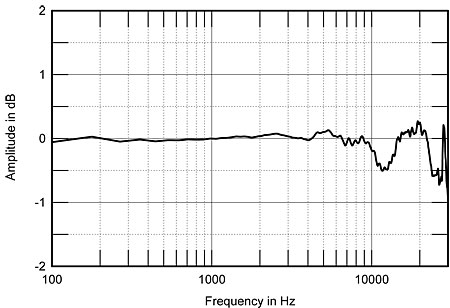
Fig.3 Vivid G1Giya, effect of grilles on anechoic response on upper-midrange axis at 50" (1dB/vertical div.).
A speaker's perceived sound balance depends on its dispersion as well as on its direct sound. Fig.4 shows the Vivid's lateral dispersion, referenced to the response on the upper-midrange axis. The radiation pattern is admirably smooth and even between 500Hz and 8kHz, something that always correlates with stable, accurate stereo imaging. Below that range is a slight dropoff at extreme angles, presumably due to the crossover between the lower-frequency drive-units, while above 8kHz, the speaker becomes a little more directional than I was expecting from its use of a small-diameter tweeter. In a large room, therefore, the G1s might sound a little mellow, though this will be offset if the owner uses a tube amplifier, due to the impedance effect mentioned earlier. In the vertical plane (fig.5), the Giya's response changes very little over quite a wide window—just as well, given that the upper-midrange axis is a high 43" from the floor.

Fig.4 Vivid G1Giya, lateral response family at 50", normalized to response on upper-midrange axis, from back to front: differences in response 90–5° off axis, reference response, differences in response 5–90° off axis.

Fig.5 Vivid G1Giya, vertical response family at 50", normalized to response on upper-midrange axis, from back to front: differences in response 15–5° above axis, reference response, differences in response 5–10° below axis.
The red trace in fig.6 shows the G1Giya's spatially averaged response, calculated from 20 measurements of the left and right speakers individually taken in a vertical rectangular grid 36" wide by 18" tall and centered on the position of WP's ears in his listening chair. As suggested by the direct-sound response in fig.2, there is a little too much energy in the midrange, but the balance above that region smoothly slopes down in textbook manner for this kind of measurement. (The room furnishings become increasingly absorptive with increasing frequency.) Lower-frequency room effects are relatively minor, although there is the usual midbass boost due to Wes's room acoustic. The low bass is excessive, due, I suspect, to the G1's port output coinciding with the frequency of the diagonal mode in WP's room. But even without that reinforcement, the G1 is a full-range design capable of delivering full output down to 20Hz. The blue trace in fig.6 shows the spatially averaged response of the Thiel CS3.7s in the same room. As WP commented, the Thiels have significantly less low-frequency output, and their relative excess of presence-region energy will reduce image depth compared with the Vivids, and contribute to his finding that the Thiels had a little less "timbral richness."

Fig.6 Vivid G1Giya, spatially averaged, 1/6-octave response in WP's listening room (red); spatially averaged response of Thiel CS3.7 (blue).
Turning to the time domain, fig.7 shows the G1's step response on its upper-midrange axis. All the drivers appear to be connected in positive acoustic polarity and the first reflection of the speaker's high frequencies, from the ceiling, can be seen just before the 7.5ms mark. The positive-going steps show, from left to right, the arrivals of the tweeter, upper-midrange unit, lower-midrange unit, and woofers; again in textbook manner, the decay of each drive-unit's step is smoothly integrated with the start of the step of the next lower in frequency. Although it isn't evident on the scale used for this graph, the port's output is, unusually, also in positive acoustic polarity.
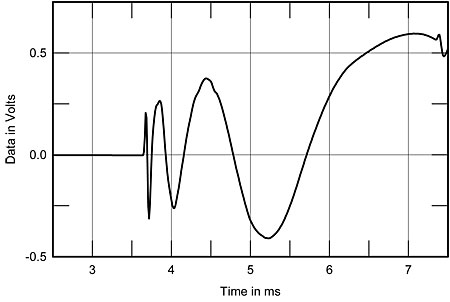
Fig.7 Vivid G1Giya, step response on upper-midrange axis at 50" (5ms time window, 30kHz bandwidth).
Finally, the G1Giya's farfield cumulative spectral-decay plot (fig.8) is not quite as clean as I was expecting. There is a low-level mode evident at 9.6kHz, which I imagine is the upper-midrange unit's primary dome resonance after it has been suppressed by the crossover's steep low-pass filter, and there is a slight step evident at 3.9kHz.
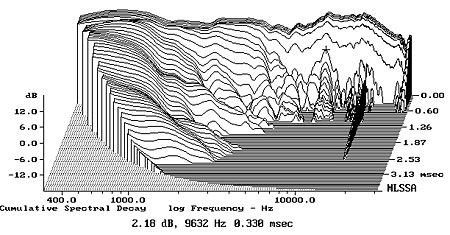
Fig.8 Vivid G1Giya, cumulative spectral-decay plot on upper-midrange axis at 50" (0.15ms risetime).
Measuring a speaker as large and bulky as Vivid Audio's G1Giya always involves more uncertainty than it does with a minimonitor, just because of the difficulties in handling the speaker. But other than the slight excess of midrange energy, the G1's measured performance is superb, particularly that commendably smooth in-room response. The G1Giya is a worthy successor to Laurence Dickie's ground-breaking B&W Nautilus.—John Atkinson..
|